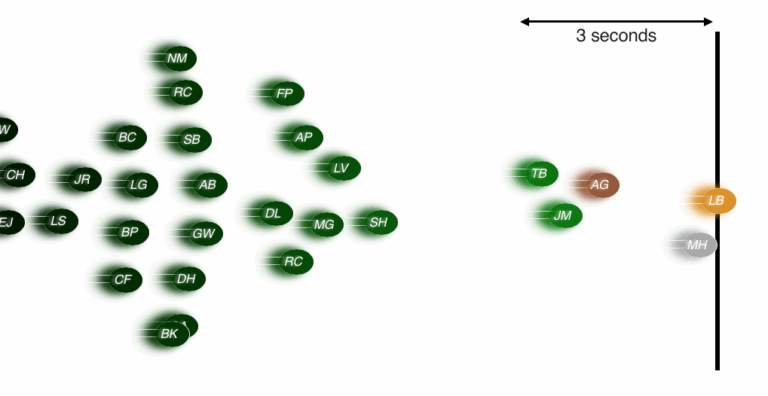Last week we took a trip over to Moab in Utah to rendezvous with SRAM and to take a spin on their latest trail products for 2014. You’ll be able to read our reaction to the new products in Dirt #147, but let’s start by taking a quick look around the latest brake to come out of the SRAM factory: the Guide.
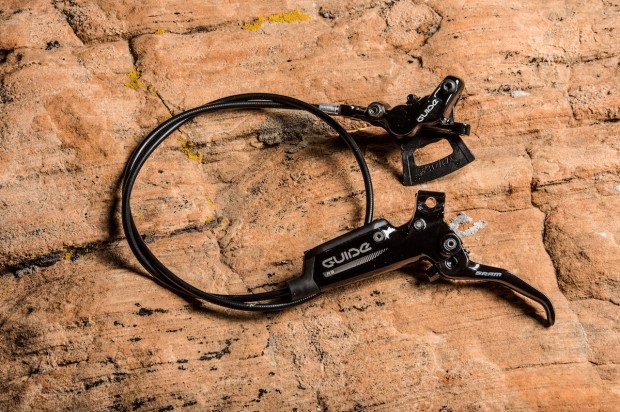
The new SRAM Guide RSC is packed with ride-enhancing performance that makes every new trail a trusted old friend. We started from scratch, to create the perfect combination of braking reliability and control. Brand-new SwingLink™ technology provides more power, silky-smooth modulation, less deadband and better lever-feel than you’ve ever experienced.
– SRAM
The name comes courtesy of Simon from Western Spirit, a mountain bike guiding firm based in North America. Why’s that then? I think it’s fair to say that Simon was probably talking a little tongue-in-cheek when he suggested naming the product after his profession, but the traits associated with a good guide are apparently the exact same as those of the new brake from SRAM: to be “Robust, reliable, dependable” – the words of SRAM’s MTB Brake Product Manager James Alberts.
 Gratuitous Moab riding shot.
Gratuitous Moab riding shot.
You may note a couple of pointers when looking at the new setup: (1) the caliper looks pretty much the same as Avid’s four-piston Trail brakes – the Guide will be replacing that line of products; and (2) the brake is labelled SRAM, not Avid – a clear decision to redefine the brakes. The key to the Guide brake is in the all-new lever and rotor, with user-friendliness and low maintenance prioritised.
There’s more to a SRAM brake than a simple change in graphics and naming. A change in design philosophy: rather than focusing on one key attribute we considered the whole brake package as a goal. We can start with a clean slate, but we can also use proven designs and technologies when it makes sense. SRAM innovates products by looking at the final goal rather than the sum of the parts. Rather than focusing on a single technology or design, we handpicked the best possible solutions to make a powerful, durable and lightweight brake.
the lowdown on Guide’s features (according to SRAM, read our take in Dirt #147)
Swinglink™
Squeeze a new SRAM brake lever and you notice it immediately. Less deadband. More positive pad engagement. A new cam system requires less lever throw to push the pads toward the rotor. That’s great, but there’s more to perfect braking performance than just power. You need control. Many brake systems minimize deadband—but at the cost of modulation. SwingLink solves that with its special cam shape. When the pads contact the rotor, power is modulated, avoiding that “on/off” brake feel. It’s the perfect balance of power and precision.
TPC Plus™
A hydraulic brake’s timing port is the connection between the reservoir and the master cylinder bore. When the lever is squeezed, a cup seal passes this area and closes the port, which pressurizes the system. SRAM’s new timing port closure system, called TPC Plus, features durable seals and an ultra-smooth cylinder bore finish producing dependable braking power and consistency.
PiggyBack Resevoir
The brake fluid reservoir on SRAM’s latest lever design is optimized for both performance and ease of use. The PiggyBack Reservoir offers a simple, failsafe way to manage brake fluid, and also allows for ambidextrous lever placement—so you can switch your levers on the handlebar and run them moto without hassle.
Contact Point Adjust
Some people like the instantaneous power of a short lever throw. Others prefer the feel of a longer throw. With Contact Point Adjust, you can pick the position you want your fingers to be in when your brakes are engaged. It’s a quick and easy way to customize the feel of your brakes without having to move the pads. It’s also a way to balance both brake levers to feel exactly the same.
Reach Adjust
Brake lever fit and feel is a personal thing. Riders have individual positioning preferences, as well as unique hand sizes and finger lengths. Reach Adjust makes it easy to adjust your lever for maximum one-finger control for everyone.
Deadband
This refers to the time between the moment you engage the lever and when the pads contact the rotor. SRAM technologies such as SwingLink balance the dual demands of minimizing deadband and optimizing modulation for braking finesse and control.
Pure Bladder™
SRAM’s new brake lever design includes a reshaped bladder, called Pure, that helps regulate and reduce air bubbles. The bladder is specifically shaped to evacuate air from the lever and push the fluid exactly where it’s needed. The result is improved back-pressure relief, which produces dependable braking power and consistency.
DirectLink™
SRAM’s DirectLink lever design produces a solid, positive feel the second you squeeze the lever to engage the brake It offers a no-nonsense solution to give you precise control.
Centerline Rotor
The new Centerline Rotor was designed to keep the center of friction consistent throughout rotation thereby minimizing vibration.
Guide Caliper
The Guide four-piston dual-diameter mountain bike caliper provides confidence in a lightweight package with more usable power. And it’s a mere four grams of weight difference over our two-piston XC specific caliper models.
Grades of Guide
There are three levels of Guide brake available, differentiated by the lever features: RSC, RS, and R.
All will be available in June 2014.
R = Reach Adjust
S = SwingLink
C = Contact point adjust
Guide RSC
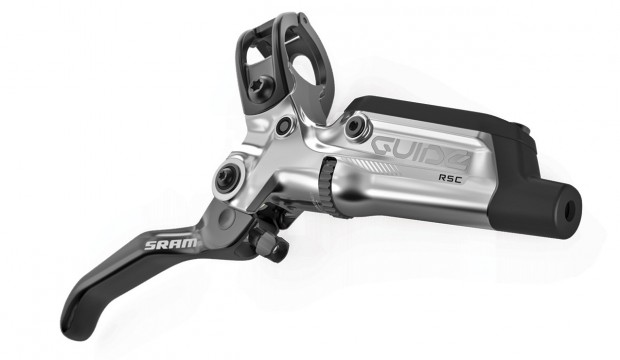
Weight: 375 Grams
Contact Point Adjust
Tool-free Reach Adjust
MatchMaker X Compatible
Lever Pivot Bearings
Guide caliper
Colors: Polished Silver Ano or Black Ano
Price: €177
Guide RS
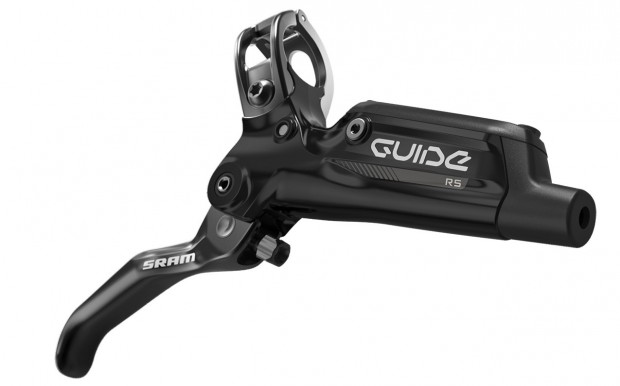
Weight: 380 Grams
Tool-free Reach Adjust
MatchMaker X Compatible
Guide caliper
Colors: Black
Price: €132
Guide R
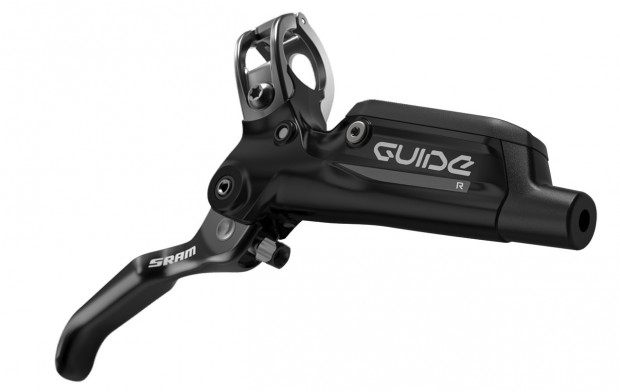
Weight: 375 Grams
Tool-free Reach Adjust
MatchMaker X Compatible
Guide caliper
Colors: Black
Price: €115




